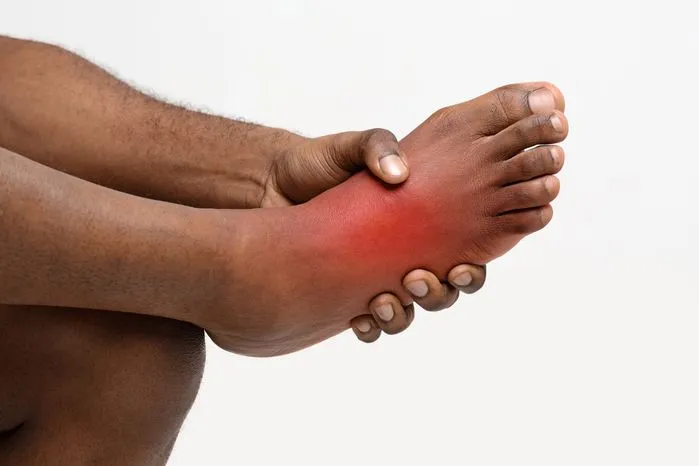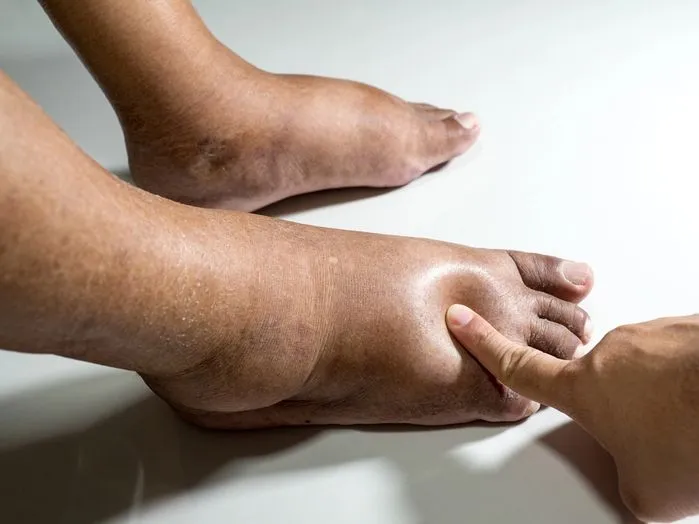
At RelefordInstitute.com, we’ve seen firsthand how quickly a minor irritation can spiral into a serious infection when left untreated. Based on decades of clinical experience treating advanced foot conditions in high-risk patients, we know the early warning signs most people—and even many providers—tend to overlook. This guide is more than generic advice. Drawing directly from real patient cases and evidence-based protocols developed in our clinic.
Top 5 Takeaways
1. Don’t ignore early signs.
- Act fast—especially if you have diabetes or poor circulation.
2. Know what type of infection you’re dealing with.
- Proper diagnosis = proper treatment.
3. Home remedies aren’t always enough.
- Some of them ease pain, but won’t cure serious infections.
- See a podiatrist if symptoms persist or worsen.
4. Prevention is powerful.
- Keep feet clean and dry.
5. Personalized care works best.
- Infections vary by type, cause, and patient risk.
- Treatments by experts are tailored for long-term healing.
Recognizing Infected Ingrown Toenails
This common condition, frequently overlooked, can induce severe discomfort. If ignored, it can even escalate into a significant health hazard.
Early recognition relies on symptom identification, helping to prevent further complications. Mitigating pain is vital when dealing with this affliction. Some relievers available without a prescription, like ibuprofen, can lessen the discomfort. Relief can also come from soaking the foot in warm water multiple times daily.
Bacterial Toenail Infections Explained
Initially, these infections appear as minor annoyances. However, without rapid, correct treatment, they can escalate.
Common symptoms include a red, swollen toe, which might be tender or painful upon contact. A foul-smelling discharge might seep from beneath the infected toenail. Changes in its shape, texture, or colour also indicate infection. If ignored, this condition can spread, leading to complications like cellulitis or systemic infection.
Understanding These Infections
Characterized by thick, yellow, or discolored nails, they can lead to significant discomfort or embarrassment.
Diagnosing these infections accurately is crucial. Healthcare professionals examine them meticulously, conducting laboratory testing on their debris if needed.
Treatment options vary after diagnosis. Topical antifungal medications, oral medications, laser therapy, or surgical removal of the infected toenail are some options.
Its Potential Causes
Often, individuals unintentionally trim them too short or irregularly, causing them to grow into the surrounding skin. Footwear that is too tight or a foot injury can also significantly increase the likelihood of developing an ingrown toenail.
Risk factors extend beyond simple causes. Conditions such as obesity, poor foot hygiene, and certain genetic predispositions increase susceptibility. Furthermore, people with diabetes or conditions causing poor circulation face a higher risk.
Effective Treatment Methods
In case of a swollen, infected toe, knowing efficient treatment methods becomes essential. Initial defense often involves home remedies. One practical approach involves soaking your toe in warm water combined with Epsom salt, which can ease swelling and discomfort. Another beneficial step is to apply topical antibiotic ointment, followed by bandaging to fend off further infections.
If these remedies are unsuccessful, or infection has advanced, seeking professional treatments becomes necessary. Experts in foot and ankle health, known as podiatrists, can recommend various treatments.
“At the Releford Institute, we’ve treated many infected toenails—many of which began as minor irritations that were overlooked until they escalated into serious, limb-threatening conditions. What we’ve learned is simple: no two infections are exactly alike. Factors like diabetes, circulation, and even nail trimming habits drastically change the course of treatment.”
Supporting Facts and Statistics
Our clinical experience at the Releford Institute mirrors national trends. The data below highlights why early, expert care is critical.
Fungal Infections Are Widespread
- ~10% of adults have fungal toenail infections.
- Risk increases with age and chronic illness.
- Many patients don’t realize they’re infected.
Source: cdc.gov
Diabetic Patients Face High Risks
- 34% of people with diabetes will develop a foot ulcer.
- 84% of diabetes-related amputations begin with an ulcer.
- In our clinic, small infections often progress fast in diabetic patients.
Source: pmc.ncbi.nlm.nih.gov
Recurrence Is Common Without Prevention
- 25% of fungal nail infections return within 2 years.
- Poor foot hygiene and tight shoes worsen the risk.
- We stress long-term prevention and follow-up care.
Source: pubmed.ncbi.nlm.nih.gov
These numbers reinforce what we see every day: toenail infections are common, but complications are preventable with timely, specialized care.
Final Thoughts & Opinion
Treating infected toes goes beyond symptom management—we uncover the root causes through decades of clinical experience.
What We've Learned Firsthand:
- Non-serious-looking infections can escalate quickly, especially in high-risk patients.
- Misdiagnosis is more common than you’d think.
- Generic advice often delays proper treatment and worsens outcomes.
Our Professional Opinion:
- Don’t delay care—seek a podiatric evaluation at the first sign of infection.
- Practice good foot hygiene and trim nails properly.
- Choose treatment providers who understand both the visible symptoms and the underlying risks.
Frequently Asked Questions
1. What are the common signs of an infected ingrown toenail?
An infected ingrown toenail often presents with redness, swelling, throbbing pain, warmth, drainage of pus, and sometimes a foul odor around the nail fold.
2. What causes an ingrown toenail to become infected?
Infection occurs when the edge of the toenail grows into the surrounding skin, creating an entry point for bacteria or fungi, especially if the area is not kept clean and dry.
3. How can you tell if the infection is bacterial or fungal?
Bacterial infections tend to cause rapid swelling, redness, pus, and intense pain, while fungal infections are usually slower to develop, causing thickened, discolored, or crumbly nails with mild inflammation.
4. What are the most common bacteria that infect ingrown toenails?
The most common bacteria involved are Staphylococcus aureus and Streptococcus species, which can invade broken skin and cause localized abscess or cellulitis.
5. What fungal organisms typically contribute to toenail infections?
Dermatophytes like Trichophyton rubrum are the most common fungal culprits, although yeasts and molds can also infect toenails, especially in moist environments.
6. Can an ingrown toenail become infected even if there is no visible pus?
Yes, an ingrown nail can still be infected even without pus if there is ongoing redness, tenderness, warmth, and worsening discomfort around the nail fold.
7. How should a mildly infected ingrown toenail be treated at home?
Mild infections may be managed by soaking the toe in warm salt water, applying an over-the-counter antibiotic ointment, and keeping the toe clean, dry, and loosely bandaged.
8. When is medical treatment necessary for an infected ingrown toenail?
Medical attention is needed if the infection worsens, pus persists, redness spreads, the pain becomes severe, or if the individual has diabetes or poor circulation.
9. What are the professional treatment options for an infected ingrown toenail?
Treatment may include nail edge removal, drainage of pus, oral or topical antibiotics for bacterial infection, antifungal medications for fungal infection, and proper nail care education.
10. How can you prevent an ingrown toenail from becoming infected?
Prevention includes trimming nails straight across without cutting too short, avoiding tight shoes, keeping feet clean and dry, and treating early signs of irritation before they worsen.
11. Is it safe to remove an ingrown toenail at home?
Self-removal is not recommended, especially if there is infection, as it can worsen the condition; proper treatment should be done by a foot care specialist or podiatrist.
12. What do foot and ankle specialists recommend for chronic or recurring infections?
For recurring cases, specialists may recommend partial or full permanent nail removal, correction of nail shape, and lifestyle modifications to reduce pressure and trauma to the toe.


















